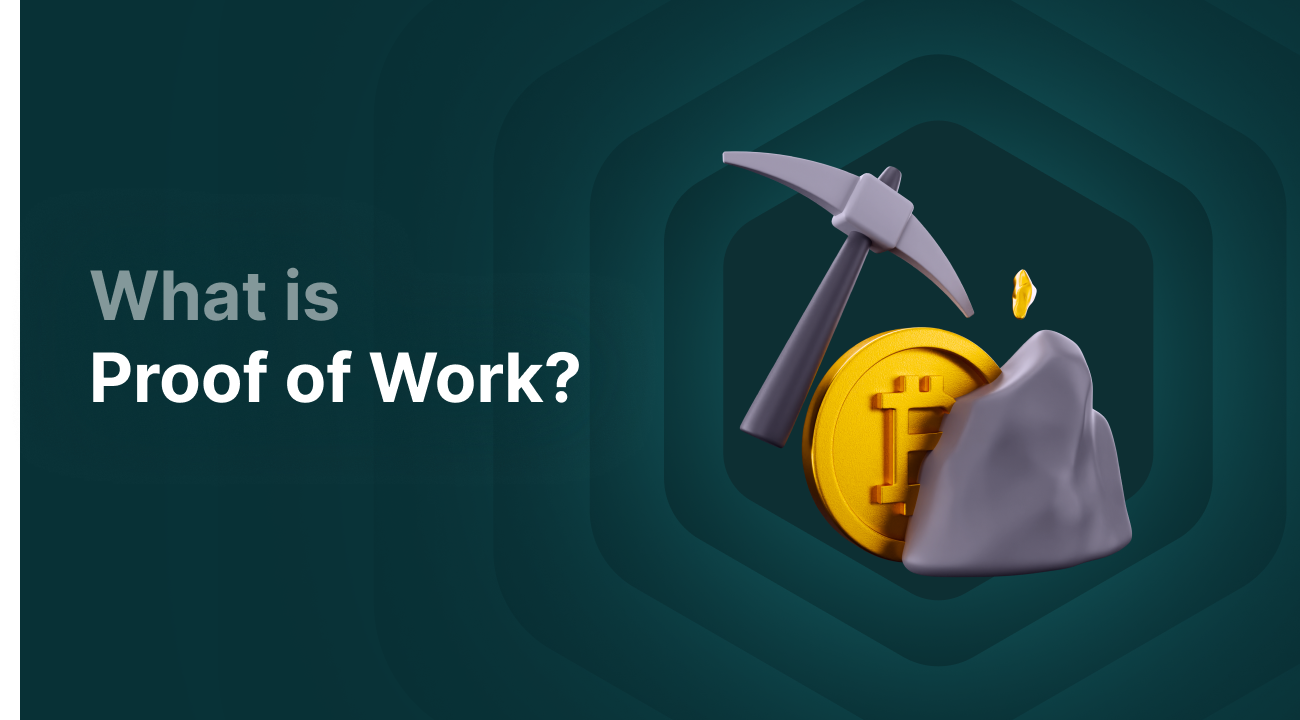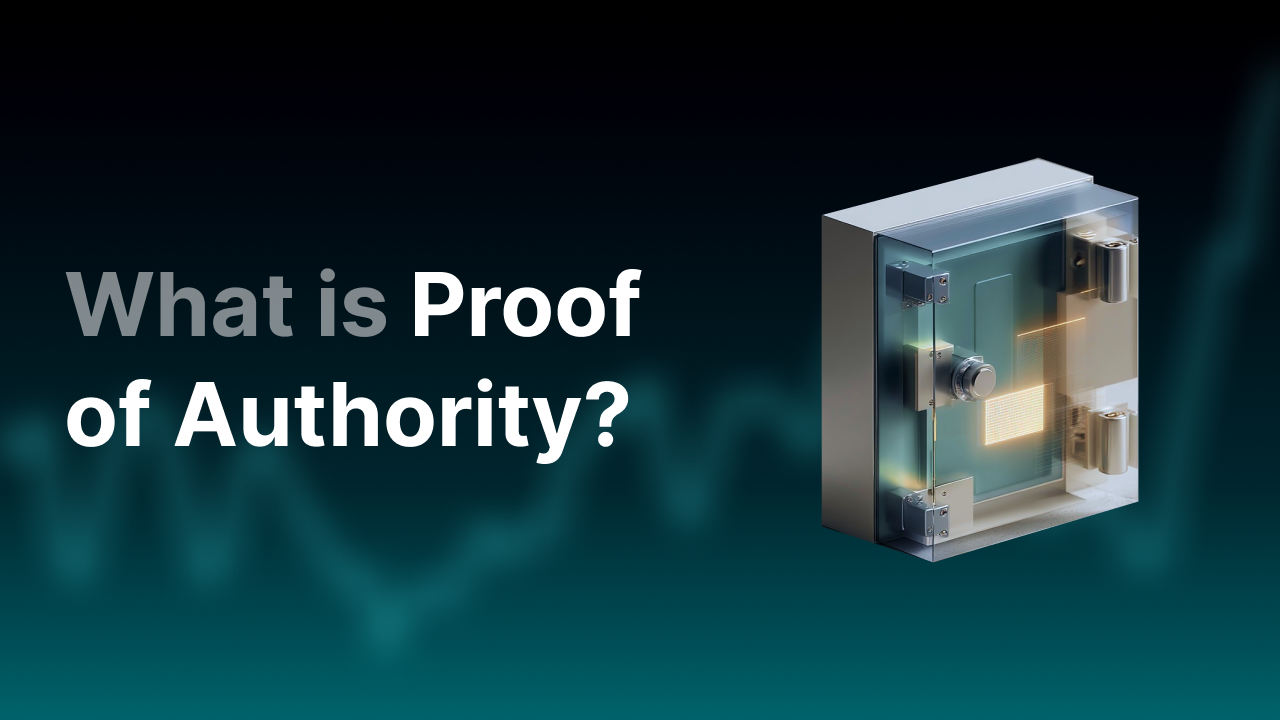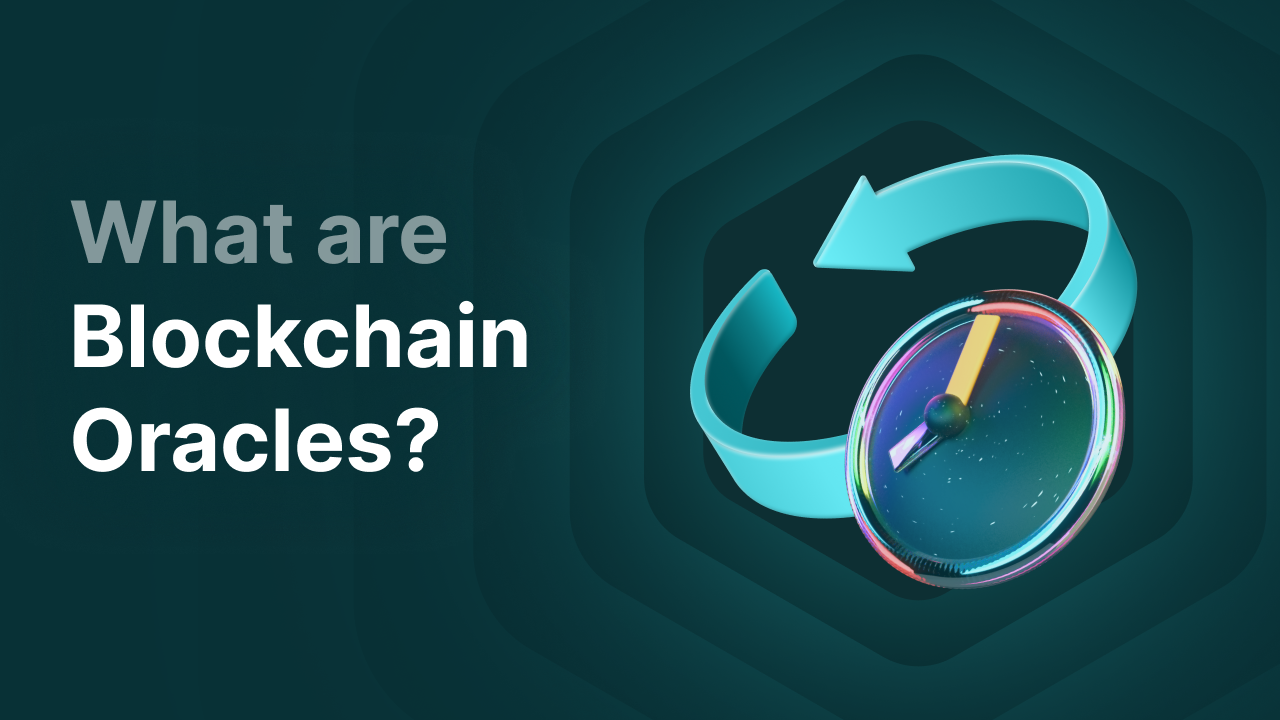What is Proof-of-Work and how does it work?

What is Proof of Work?
Proof-of-Work (PoW) is a consensus algorithm used by several blockchains for validating transactions and adding new blocks to the blockchain. The best-known example of a blockchain that uses this is Bitcoin. This is the first cryptocurrency that PoW used. Later, new blockchains were launched that also use this system, including Litecoin, Dogecoin and Ethereum (before The Merge in 2022).
Proof-of-Work is decentralized, meaning that multiple independent participants help validate transactions. This is done at PoW by miners who work around the clock to solve complex cryptographic and mathematical formulas. We call this process mining. The first miner who finds the correct number of the formula gets to add the block to the blockchain and validate the transactions in this block. The more miners are active on the network, the more decentralized the network is and thus the less susceptible it is to manipulation. In fact, a malicious party would have to control more than 50% of the network's computing power to do any damage.
A miner is a computer that harnesses its computing power to the network. This takes a lot of computing power and energy. Therefore, a miner receives a reward for deploying its computing power. The reward consists of new cryptocurrency that is circulated during the creation of a new block. The miner receives this reward. The amount of the reward depends on the blockchain and is halved by many blockchains once in a while to create scarcity. More adoption and fewer new coins should lead to higher rates, according to the creators.
Key Takeaways
-
Proof-of-Work is a reliable and well-tested consensus mechanism that validates transactions in a decentralized and secure manner through cryptographic puzzles that are difficult to solve but easy to verify.
-
A major drawback is high energy consumption. Miners use powerful, specialized hardware (ASICs), leading to concerns about environmental impact and sustainability.
-
Miners solve complex mathematical puzzles. The first to succeed gets to add a block and receives a reward in the form of new cryptocurrency, providing a financial incentive to secure the network.
-
The concept of PoW dates back to the 1990s and was later applied to Bitcoin by Satoshi Nakamoto.
-
PoW is less scalable than alternative systems such as Proof of Stake, partly due to long block times and energy consumption. In addition, the dominance of large mining pools leads to risks of centralization.
How did Proof-of-Work come about?
Proof-of-Work (PoW) was developed well before Bitcoin existed, in the 1990s. Back then, cryptographers Cynthia Dwork and Moni Naor developed a system to counter spam and denial-of-service (DoS) attacks on the Internet. They came up with the idea that a user must provide a small amount of computing power before being able to send a message over the Internet. This would make massive spam more difficult and costly.
The idea took shape in 1997 with the introduction of the Hashcash system by Adam Back. Back's 2002 white paper, "Hashcash - A Denial of Service Counter-Measure, " described that a sender of a message must first perform a calculation that can be easily verified by the receiver.
Since 1999, the system really got a name, thanks to Ari Juels and Markus Jakobsson, who introduced the terminology "Proof-of-Work."
First use of Proof-of-Work through blockchain technology
Satoshi Nakamoto (the anonymous inventor of Bitcoin) embraced the idea of Back and in 2008 integrated the concept of Proof-of-Work into his own creation, namely the Bitcoin protocol.
His white paper "Bitcoin: A Peer-to-Peer Electronic Cash System " describes how Proof-of-Work can be used for consensus building in a decentralized way, namely through the use of miners providing computing power. Nakamoto adds to this, namely the issuance of new digital coins during the mining process, which are tradable over the network and can be used to make payments. With this, Nakamoto introduces a secure and decentralized payment system, where control lies with users rather than centralized parties such as banks. It has since become a fundamental part of many blockchains.
How does Proof-of-Work work?
Proof-of-Work works by employing miners (also called nodes) around the world who try to solve complex cryptographic puzzles in order to validate all transactions. The miner who finds a solution is allowed to add a new block to the blockchain and receives a mining reward, paid out in new crypto. This system makes the network fair, as everyone has a chance to validate a block, as long as enough computing power is provided.
Security of PoW
Proof-of-Work (PoW) is secure thanks to an asymmetric principle: performing computational work (the mining process) takes a lot of computer power, while checking that work is relatively easy. This makes it difficult for malicious actors to cheat on blocks, while it is easy for other miners to check blocks. This is because other miners only need to check that the miner found the right hash (the right answer).
On top of that, an attacker would need more than 50% of the network's total computing power (hashrate) to take control of the network. This is also known as a 51% attack. Such an attack becomes increasingly difficult as more miners participate. In addition, it requires very expensive hardware and energy costs are enormous. This makes it virtually impossible with a network as large as Bitcoin's.
Should a malicious person succeed in doing this and want to make modifications to a block on the blockchain, he encounters the following problem: each block is cryptographically connected to the previous one. If someone wanted to modify an old block, he would have to re-mine all subsequent blocks with more computing power than the rest of the network.
Difficulty of mining
Proof-of-Work works by solving a complex cryptographic puzzle. The solution is called a hash and is a type of digital signature consisting of a 64-digit hexadecimal number (example: 0000000000000000000a3b4c5d6e7f8a9b0c1d2e3f4a5b6c7d8e9f0a1b2c3d4e).
As you can see in the example, the hash consists of numbers and letters. In the system you use:
-
the numbers 0 to 9
-
and the letters a to f (which stand for the numbers 10 to 15)
Thus, such a hash contains letters because the hexadecimal system requires it. It is an efficient way to represent a long sequence of bits. Each hex character represents 4 bits.
A puzzle is solved once a miner finds a hash small enough according to a predetermined rule. The smaller the hash must be, the harder it becomes to find it. This is determined by the difficulty level (difficulty). The more participants, the harder the hash is made. In this way, the network keeps control over how long it takes to mine a new block.
The difficulty level determines how many zeros must be in the front of the hash. For example:
-
At low difficulty, a hash may begin with 00af....
-
At higher difficulty, a hash must begin with 000000f1....
In Bitcoin, the difficulty level is adjusted about every 14 days. Satoshi Nakamoto devised this to ensure that new blocks, and thus new bitcoins, cannot be mined too quickly. Bitcoin uses SHA-256 hashing, which means that each hash consists of 256 bits, represented by exactly 64 hexadecimal characters.
The more computing power a mineral possesses, the easier it is to find a solution. Therefore, you are much more likely to find the solution with sophisticated hardware, rather than with the computing power of a cell phone.
Finding the right hash
It takes a lot of computing power to solve the formula and find the correct hash. As an aid, miners use an extra number called the "nonce." The miners themselves adjust the nonce each time: from 0, to 1, to 2, and so on. Digit by digit, they search for the correct combination of block data. If the hash returns a 64-digit combination that meets the requirement, the block is valid. The nonce is thus a kind of guess number that miners keep trying with until they find the right hash.
To finally mine a block, the miner must also calculate the hash of the blockheader. This is a kind of summary of the most important data from a block. The data it contains include the hash of the previous block, the timestamp and the nonce.
In addition, the hash must be smaller than the "target." This is the threshold determined by the difficulty level.
An example:
Suppose the target is: 00000000ffffffffffff...‖. Then that means: the block's hash must be numerically lower than this target. Because hexadecimal numbers begin with numbers and letters, you can visually see it as if the hash must begin with eight zeros or more. The more zeros at the beginning, the smaller the number is.
So:
-
A hash like 12bfa34d... is too big
-
A hash like 0000a9f2... is still too big
-
A hash like 0000000037c4... is small enough
The miner keeps trying until the right combination is found.
This is immediately the reason why so much computing power is needed: several miners are working simultaneously to find the right solution.
Which blockchains use the Proof-of-Work consensus mechanism?
Within the crypto world, Proof-of-Work is a popular consensus mechanism employed by several major blockchains.
Bitcoin
The best-known example of a Proof-of-Work blockchain is, of course, Bitcoin. This is the first blockchain to use this technology. In the early days of Bitcoin, it was still relatively easy to mine new bitcoins, but since its high adoption, it has become more difficult to participate in Bitcoin mining as a small participant. It is still possible, only the chances of successfully adding a block to the blockchain on your own have become very small. This is because Bitcoin mining farms have sprung up all over the world, where thousands of powerful computers are busy mining bitcoin 24 hours a day. Partly because of this, several mining pools have emerged within the network: collaborations of smaller miners who join forces to provide more computing power.
Thanks to these mining pools and farms, it is sometimes said by some that Bitcoin is no longer as decentralized as originally intended.
Ethereum
Until 2022, Ethereum m also used Proof-of-Work. In 2021, the upgrade to Ethereum 2.0 called for a move to Proof of Stake to achieve greater scalability and become more energy efficient. This is because a staker mechanism does not require heavy hardware to validate transactions; instead, participants secure their tokens as security for the network.
Litecoin
Not long after the birth of Bitcoin, Litecoinwas introduced as a so-called altcoin. Although Litecoin is heavily based on Bitcoin, it is not a direct hard fork of the Bitcoin blockchain itself, but rather a fork of the Bitcoin codebase. The intention was to create a better payment method: faster and cheaper than Bitcoin. For example, Litecoin's block time is 2.5 minutes instead of 10 minutes, making for faster transaction processing.
In addition, Litecoin uses a different algorithm for mining new blocks, namely the Scrypt algorithm instead of Bitcoin's SHA-256. Scrypt was designed to be less susceptible to ASIC dominance and in its early years allowed people to mine with ordinary computers. This initially made it less energy-intensive, although today ASICs optimized for Scrypt are also used.
Dogecoin
Dogecoin also uses Proof-of-Work. In 2013, the cryptocurrency was developed as a joke, but Dogecoin has since grown (thanks in part to Elon Musk) into one of the largest cryptocurrencies. Dogecoin is technically very similar to Litecoin and therefore uses the same mining algorithm: Scrypt instead of Bitcoin's SHA-256 algorithm. This makes it easier to mine with cheaper and more energy-efficient hardware.
Bitcoin Cash
Bitcoin Cash also uses Proof-of-Work. Bitcoin Cash was created from a hard fork of Bitcoin after disagreements over the SegWit update. Bitcoin Cash is very similar to Bitcoin, but has a larger block size, making it more scalable and able to process more transactions: namely between 100 and 200 transactions per second (TPS), compared to Bitcoin's roughly 7 TPS.
Criticism of Proof-of-Work's energy use
The energy consumption of Proof-of-Work has been criticized. This is because it requires heavy and specialized hardware, known as ASICs (Application-Specific Integrated Circuits). These systems consume enormous amounts of energy. Critics express particular concerns about PoW's long-term environmental impact and consider the system unsuitable from a sustainability standpoint. This is one reason why other consensus mechanisms have been developed, such as Proof of Stake, Proof of History and hybrid forms.
Advantages and disadvantages of Proof-of-Work
Proof-of-Work was one of the most popular consensus mechanisms, particularly in the early days of crypto, and for good reason. It has proved revolutionary and has many advantages. At the same time, there are also disadvantages and questions about the future-proofing of the mechanism. Below are the main advantages and disadvantages:
Conclusion
Proof-of-Work (PoW) is one of the most important innovations within the world of blockchain and cryptocurrencies. The mechanism of Bitcoin, among others, has proven in practice to be a highly secure and transparent way to validate transactions without the intervention of central parties. PoW's strength lies in the simplicity of the idea: complex puzzles that are difficult to solve but easy to verify.
Yet PoW also has obvious drawbacks. Its high power consumption, dependence on expensive and specialized hardware, and the increasing dominance of large mining pools put pressure on the original vision of full decentralization. In addition, its limited scalability leads to delays and high costs with high usage, making it less suitable for some applications.
Despite these limitations, PoW remains relevant. It remains a foundation under some of the world's most valuable and influential blockchains. At the same time, criticism of energy consumption and centralization is driving the development of alternative systems such as Proof of Stake. The future will likely be a mix of different consensus mechanisms tailored to the needs of specific networks and applications.




